Corris is a village in the south of Snowdonia in the ancient county of Merionethshire. The village is in the heart of an old slate mining area. The men of Corris who fell during both World Wars are commemorated on two memorial plaques, which are affixed onto the outer walls of Corris Institute. The building had been erected in Bridge Street in 1911, but was later adopted as a memorial hall.
The Great War, 1914-1918
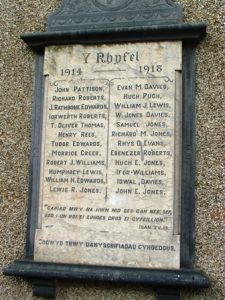
Evan Morris Davies, Private, 57795, Machine Gun Corps. Evan was the son of Lewis and Mary Davies, of Aberllefenni. He married Martha Jones in 1912, and the couple lived at Aberllefenni, Corris. Evan enlisted into the Royal Welsh Fusiliers at some time in 1915, and after completing his training became a specialist machine-gunner, being posted to the 89th Company, Machine Gun Corps. The Company was in France attached to 89 Brigade, 30th Division and had been in France since November 1915. The Division took part in its first major action during the Somme Offensive, at the Battle of Albert, where it captured Montauban. It then fought during the latter stages of the offensive, during the Battle of Le Transloy, before wintering on the Somme. In March 1917 the Division followed the German Retreat to the Hindenburg Line, and in April took part in the First Battle of the Scarpe, and then at the later Second Battle of the Scarpe. Later that year the Division was moved north to Ypres, and fought at the Battle of Pilckem Ridge. Over the sinter the Division was stationed near St. Quentin, in the southern Somme sector. Evan took ill just after Christmas 1917, and died of lobar pneumonia on 14 January 1918, aged 29. He is buried in Cerisy-Gailly Military Cemetery, France.
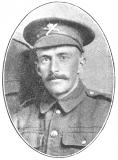
Idwal Davies, Private, 81762, Royal Army Medical Corps. Idwal was born at Gwytherin in 1883, the son of Mary Davies. He was a Ministerial Student, training for the cloth, prior to the war. Idwal enlisted at Rhyl into the Royal Army Medical Corps on 28 January 1916, giving his next of kin as his sister, Gladys Davies, of Brynffynon, Upper Corris. He was posted to Sheffield for training before being posted to Wharncliffe Military Hospital on 16 August 1916. On 18 June 1917 Idwal embarked at Southampton aboard the SS Antrim, and disembarked at Le Havre the following day. He then entrained for Marseilles, and embarked aboard the HT Kinsfauns Castle for Alexandria. Idwal joined the RAMC Base Depot at Mustapha, and from there was posted to the 10th Cavalry Brigade. He was later posted to the 10th Combined Field Ambulance, RAMC. Just weeks before the end of the war, Idwal took ill, and was admitted into the 21st General Hospital, Alexandria. He died there of dysentery on 24 October 1918, aged 35. Idwal is buried in Alexandria (Hadra) War Memorial Cemetery, Egypt.
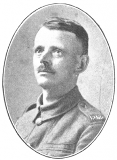
Robert Jones Davies, Private, 13360, Welsh Regiment. Robert was the son of Robert Jones Davies and Mary Ann Davies, of 4, Carmel, Corris. At some time between 1911 and 1914 the family moved from Corris to 4, Cross Street, Ynysboeth, near Abercynon. Robert enlisted at Cardiff into the Welsh Regiment soon after the outbreak of war, and was posted to France on 4 August 1915, joining the 1st Battalion, Welsh Regiment, which was attached to 84 Brigade, 28th Division. Robert joined the battalion at Locre, in the Ypres Salient. He saw his first taste of trench warfare when the 1st Welsh moved into the front line at Kemmel on 14 August, and the battalion endured a horrific spell in the line over the coming weeks, during which they constantly suffered the blowing of underground mines and German trench mortar fire. The Battle of Loos opened, just to the south, on 25 September 1915, and the 28th Division was transferred to the Loos sector to take part in the offensive there. By 29 September the 1st Welsh was at Vermelles, in the support trenches. At 15.00 on 31 October the 1st Welsh attacked Little Willie trench, a system attached to the Hohenzollern Redoubt. The battalion attained its objectives after a hard fight and, together with the 6th Welsh, began digging a communication trench back to link up with the British front line. Throughout this period, the 1st Welsh were also caught in a ferocious bomb battle with the Germans, with hundreds of hand-grenades being thrown by both sides. Robert was killed in action in Little Willie trench on 2 October 1915, during this ferocious fight. The 21-year-old has no known grave and is commemorated on the Loos Memorial, France. Robert is not commemorated on the Corris memorial.
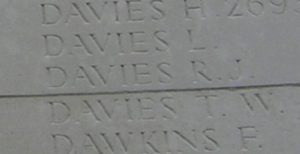
William Jones Davies, Private, 203689, Middlesex Regiment. William was the son of Robert and Catherine Davies, of Pantycelyn, Corris. He was living in Harlesden, London prior to the war, and worked as a Joiner and French Polisher. William enlisted at Mill Hill into the 9th Battalion, Middlesex Regiment on 8 June 1916. After completing his training, he embarked at Folkestone on 8 February 1917, and joined the 41st Infantry Base Depot at Étaples. William was hospitalised for a short while before being posted to the 13th Battalion, Middlesex Regiment on 16 May 1917. The battalion was attached to 73 Brigade, 24th Division and was in the Arras sector, where it had been fighting alongside the Canadian Corps at Vimy Ridge. Just a month later, on 17 June, William was wounded, being shot in the left arm. He was evacuated to the 140th Field Ambulance for treatment before returning to England for further medical care. On 31 March 1918 William returned to France, and was posted from Étaples to the 21st Battalion, Middlesex Regiment, which was attached to the 40th (Bantam) Division. The Division had been involved in the desperate fighting following the German Spring offensive from 21 March, during its retreat from the Boiry Becquerel to Bucquoy. The Division was relieved at the end of March, and by 2 April had been moved to the Sailly-sur-la-Lys area and took over the line in the Fleurbaix sector. On 9 April 1918 the Germans launched the second phase of their Spring offensive in this area, along the Lys valley, and the 40th Division became caught up in desperate fighting. By 09.30 the 21st Middlesex received reports that the front line had been broken in the Portuguese front, and was ordered to reinforce the machine-gun line. At 11.00 the battalion was hit by the German attack, and suffered heavy casualties before withdrawing across the River Lys. William had been wounded during the day, and was evacuated to the 43rd Casualty Clearing Station, where he died of his wounds the following day, 10 April 1918, aged 29. He is buried in Haverskerque British Cemetery, France.
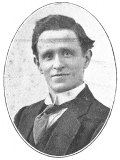
John Rathbone Edwards, Second Lieutenant, Duke of Cornwall’s Light Infantry. John was born on 18 August 1880, the son of Griffith Edwards and Hannah Edwards (nee Davies), of Stafford House, Corris. He was a Chartered Accountant, and had served during the Boer War of 1899-1902. He married Mabel Florence Lanham in 1909, and the couple lived at 54, Ascupart Street, Southampton. John enlisted into the Royal Army Medical Corps after the outbreak of war and was commissioned into the Duke of Cornwall’s Light Infantry on 9 April 1916. He was posted to the 7th Battalion, DCLI, which was at Wormhoudt attached to 61 Brigade, 20th (Light) Division, and joined the battalion on 3 May. On the following day he went home on leave, and re-joined the battalion on 11 May, when it was in reserve on the Canal Bank, north of Ypres. The Division then moved to positions around Potijze Wood, where it held the line over the coming weeks, in between supplying working parties in Ypres. On 1 July the 7th DCLI took over the Potijze trenches to begin a period of trench rotation. At 14.00 on 6 July 1916 the battalion observed a lot of machine-gun fire on the left flank, and the Divisional artillery then opened up a bombardment onto the Germans opposite. In retaliation, the German artillery opened up, and John was killed by a fragment of shrapnel. His body was carried back behind the lines by his men and the 36-year-old was buried in Vlamertinghe Military Cemetery, Belgium. His brother, Tudor, was killed on the Somme two months later.
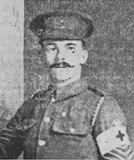
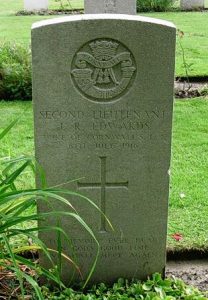
Tudor Edwards, Sapper, 140937, Royal Engineers. Tudor was the son of Griffith Edwards and Hannah Edwards (nee Davies), of Stafford House, Corris. He married Florence Olive Portlock on 22 June 1904, and the couple resided at Stafford House, Corris, with Tudor’s widowed mother. Tudor worked as a Slate Mason prior to enlisting at Blaenau Ffestiniog into the Royal Engineers, and was posted to France early in 1916, joining the 89th Field Company, Royal Engineers. The Company was attached to the 14th (Light) Division, and was preparing from a move from the Ypres Salient to the Somme. The Division took part in desperate fighting at Delville Wood and then at the Battle of Flers-Courcelette, a battle which saw the first use of tanks in warfare. On 11 September 1916 the 89th Field Company moved from Dernancourt to Fricourt Camp and began working around Fricourt Wood. On 15 September 1916 Tudor went forward to Delville Wood with a working party from the Company to assist the Divisional Artillery. He was killed by German artillery fire during the afternoon, and was buried on the battlefield. After the war the grave of the 38-year-old was found, and identified by his army number in his boots. He was re-interred in Serre Road Cemetery No.2, France in August 1931, along with the remains of another Royal Engineer buried beside him. His brother, John Rathbone Edwards, had been killed at Ypres two months earlier.
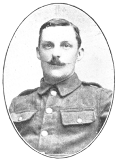
William Henry Edwards, Private, 81735, Royal Army Medical Corps. William was the son of Richard and Ann Edwards, of Ceinws, Corris. He lived at 10, Graig Terrace, Bedlinog prior to the war, and was a Theological Student. William enlisted at Rhyl into the Royal Army Medical Corps on 27 January 1916, and was posted to Sheffield for training. He embarked at Southampton aboard the HS Essequibo on 10 September 1916 and disembarked at Salonika on 21 September. William was posted to the 36th General Hospital at Vertekop. After ten months in Salonika, William contracted Malaria, and was hospitalised himself on 12 July 1917. He returned to duty two weeks later, but suffered a relapse, and was diagnosed as suffering from dysentery and malaria on 23 September. Now dangerously ill, William’s health continued to decline, and he died at the 36th General Hospital on 7 October 1917, aged 32. He is buried in Mikra British Cemetery, Kalamaria, Greece.
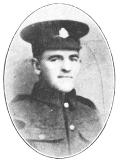
Rhys Daniel Evans, Private, 67570, Cheshire Regiment. Rhys was the son of Peter and Sarah Evans, of Pensarn, Aberllefenni, Corris. He was living in Ynyshir at the outbreak of war, but returned home to enlist at Dolgellau into the army. After completing his training, Rhys was posted to France early in 1918, joining the 15th Battalion, Cheshire Regiment, which was attached to 105 Brigade, 35th Division. The Division had been in France since the beginning of 1916 and had fought on the Somme, but it had been withdrawn from the line and rebuilt before moving back into the line, and following the German withdrawal to the Hindenburg Line in March 1917. The Division then moved north to Ypres, and fought at the Second Battle of Passchendaele. The Division was in the Ypres Salient when the Germans launched their Spring offensive along the front from Croisilles to La Fère on 21 March 1918, and was rushed down to the Somme battle area, and detrained at Mericourt-L’Abbe. The Division then relieved the battered front-line troops at Maricourt on 24 March, and almost immediately came into contact with the enemy. By the time the 15th Cheshire’s had been relieved by the Australians on 31 March, it had suffered over 300 casualties. Rhys probably joined the battalion after this, while it was in reserve at La Houssoye. The Division then moved to the line north of Albert for a short while, taking up positions alongside the 38th (Welsh) Division. On 16 June the 35th Division was relieved by the 12th Division and moved into reserve, before beginning the move north back to the Ypres Salient. The Division then relieved a French Division in the Locre Sector. The 15th Cheshire’s were at Locre on 19 July 1918 when Rhys was killed by German artillery fire. The 19-year-old is buried in Abeele Aerodrome Military Cemetery, Belgium.
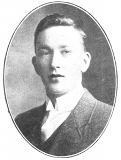
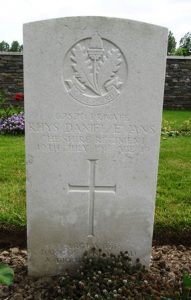
Morrice Greer, Captain, Royal Army Medical Corps. Morrice was born in Liverpool in 1882, the son of Arthur Greer and Mary Hadfield Greer (nee Moore). The family resided at Ballasalla House, Isle of Man. Morrice was educated at Liverpool University, and after qualifying as a Surgeon took the post of House-Surgeon at Leeds Public Dispensary, then of Assistant Surgeon of Liverpool Dispensary and of Senior House-Surgeon of the Liverpool Stanley Hospital. He begun his own practise at Corris prior to the war, and became Medical Officer and Public Vaccinator of the Tal-y-Llyn District of Dolgellau Union, certifying factory surgeon and medical officer of the Post Office. On 26 April 1913 he married Gwladys Elizabeth Williams of Rhyl, and the couple resided at Corris. On 21 July 1913, Morrice became the Medical Officer of the 7th Battalion, Royal Welsh Fusiliers. Following the outbreak of war, he became embodied with the 7th Battalion, Royal Welsh Fusiliers. The battalion embarked for Gallipoli in July 1915, as part of 158 Brigade, 53rd (Welsh) Division, but Morrice remained in Britain for now, probably with the reserve battalion at Park Hall, Oswestry. In March 1916 he embarked for Egypt to join the 1/7th Battalion, Royal Welsh Fusiliers, which had been evacuated there from Gallipoli with the 53rd Division in December 1915, moving to Egypt to join the EEF, and helped guard the Suez Canal before taking part in operations to drive the Turks out of the Sinai. The EEF then turned its attention onto driving the Turks out of Palestine, and on 26 March 1917 launched its first offensive against the coastal city of Gaza, which guarded the road to Jerusalem. Initial gains during the day were lost when the assaulting divisions lost touch with each other and communication broke down when a thick fog cloaked the battlefield. A second attempt to force Gaza was launched on 17 April, but again failed, so the EEF suffered a change in command, with Sir Edmund Allenby taking the reins, and was reorganised over the coming months. Morrice was reportedly killed whilst treating a wounded soldier on 16 June 1917. The 34-year-old is buried in Gaza War Cemetery, Palestine.
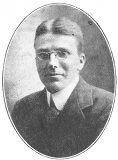
Hugh Edward Jones, Private, M2/133360, Royal Army Service Corps. Hugh was born in 1890, the son of John and Jane Jones, of 51, Garneddwen, Corris. The family later resided at Cwmhafod, Aberhosan. Hugh worked as a farm labourer prior to the war. He enlisted at Wrexham into the Royal Army Service Corps, and upon completing his training, was posted to France, joining the 75th Siege Battery Ammunition Column. The battery was attached to the South Africans, and saw extensive service on the Somme in 1916, following its arrival on the Western Front, having joined the 9th (Scottish) Division. In 1917 the Division took part in the Battle of Arras and in the Third Battle of Ypres. When the Germans launched their Spring offensive on 21 March 1918, the South Africans fought a famous defence at Gauche Wood, near Villers Guislain. The Division then moved to Flanders to rebuild, but became caught up in the second phase of the German offensive, on the Lys, from 9 April. The Division remained in Flanders over the coming months prior to the launching of the great Allied offensive on 21 August 1918, then took part in the advance in Flanders. Hugh was killed in action just afterwards, on 8 September 1918, aged 27. He is buried in Feuchy Chapel British Cemetery, Wancourt, France. His brother, William Rowland Jones, was awarded the Military Medal in 1918 for rescuing a wounded man while under heavy shellfire.
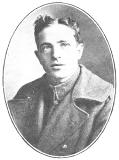
John Evan Jones, Private, 38504, Gloucestershire Regiment. John was born at Aberdovey in 1899, the son of Joseph and Jane Jones. By 1911 both John and his mother Jane were under the care of Mr. and Mrs. William Lloyd, at Aberystwyth Poor Law Institution. He enlisted at Wrexham into the South Wales Borderers, and was posted to France at sometime after 1917, joining the 8th Battalion, Gloucestershire Regiment, which was attached to 57 Brigade, 19th (Western) Division. John probably joined the battalion after its exertions at Messines in 1917. The Division then fought on the Menin Road and at Polygon Wood, before moving up to Broodeseinde, Poelcapelle and Passchendaele Village itself. In 1918 the Division was caught up in the German Spring Offensive near St. Quentin, where they suffered terrible casualties, taking part in a gallant rearguard action around Bapaume, before moving to Ypres to rebuild. Unfortunately, the next phase of the German plan was a strike at Messines, to force a passage to the channel ports. John was killed during the German attack at Messines at some time between 9 and 18 April 1918. He was 18 years old, and is commemorated on the Tyne Cot Memorial, Belgium. He was a member of Capel Shiloh.
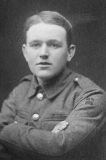
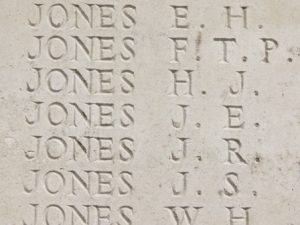
Lewis Richard Jones, Private, 54738, Royal Welsh Fusiliers. Lewis was the son of Edmund and Ellen jones, of 2, Tanyfron, Corris. He enlisted at Tywyn into the Royal Welsh Fusiliers, and after completing his training was posted to the 10th Battalion, Royal Welsh Fusiliers, which was in France attached to 76 Brigade, 3rd Division. He probably joined the battalion following its move south from the Ypres Salient to the Somme in the Summer of 1916, among a number of reinforcements posted to the battalion following heavy losses during the Actions of the Bluff, and the fighting at the St Eloi Craters. The Division moved to the Somme sector during the first week of July 1916, and took part in the Battle of Bazentin, where it captured Longueval. The Division then took part in the Battle of Delville Wood, where two men of the 10th RWF gained the award of the Victoria Cross. The Division then moved to the Loos sector to rest before returning to the Somme in October and on 13 October the 10th RWF moved into the front line facing Serre. The Division then moved out of the line for an intensive training course before taking over the trenches facing Serre again on 12 November and on the following morning launched an assault against the strongly defended Serre trenches. After heavy fighting the battalion gained its objectives, but the battalions on its flanks became bogged down, and the 10th RWF suffered almost 300 casualties before withdrawing from its gains. Lewis had been killed in action during the days fighting. The 19-year-old has no known grave and is commemorated on the Thiepval Memorial, France.
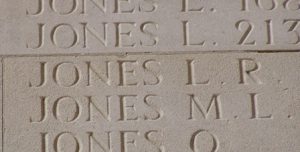
Mary Jones, Nurse, British Red Cross. Mary was the daughter of Hugh Jones, of Foelfriog, Aberllefenni. After leaving school she trained as a Nurse and took up a position at Brownlow Hill Hospital, Liverpool. After two years working in Liverpool, Mary took ill, and died of pneumonia on 15 October 1918, aged 23. Nothing further is known of her, as she is not commemorated by the CWGC. She is not commemorated on the Corris memorial.
Richard Meyrick Jones, Private, 75630, Royal Welsh Fusiliers. Richard was the son of John and Gwen Jones, of 57, Garneddwen, Corris. He enlisted into the Royal Welsh Fusiliers, and after completing his training was posted to the 11th Battalion, Royal Welsh Fusiliers, which was in Salonika attached to 67 Brigade, 22nd Division. The British and French had sent a strong force out to Salonika following the defeat of their ally, Serbia, by a combined Australian, German and Bulgarian invasion. The Serbs had retreated into Greece as their country fell, so the Greek forces holding the Salonika front bolstered by the arrival of these British and French Divisions. Richard was killed in action in Salonika on 28 June 1918, aged 21. He is buried in Karasouli Military Cemetery, Greece.
Samuel Jones, Driver, 136731, Royal Field Artillery. Samuel was the son of John and Annie Elizabeth Jones, of Bristol House, Corris. He worked as a Colliery Timberman prior to the war. Samuel enlisted into the Royal Field Artillery at Machynlleth following the outbreak of war and married Catherine Michael whilst on leave in 1917. He was then posted out to France, joining the 3rd Battery, 45th Brigade, Royal Field Artillery. The Brigade had been on the Western Front since 1914, attached to the 8th Division. The Division took part in the Third Battle of Ypres in the summer of 1917. In March 1918 the Division moved south to the Somme sector, taking up positions at Harbonnières, on the Amiens to Péronne road, to help stop the German advance, following their offensive of 21 March. The Division moved into the battle area soon afterwards and took part in desperate fighting over the coming weeks to help stop the German advance on Amiens. On the night of 6 May the 45th Brigade entrained with the Division and moved to the Aisne sector to rest and rebuild. On 27 May 1918 the Germans launched their third, and last, offensive of 1918 along the Chemin-des-Dames on the Aisne. The Batteries of the 45th Brigade had been warned the previous day to keep a special look out for signs of German activity, and at 01.11 on the morning of 27 May came under heavy artillery fire themselves, with a mix of gas shell. Communications to the rear were destroyed, and within hours the German infantry attacked, hitting the Battery’s positions at 06.30. Samuel was killed in action during that mornings fighting. The 27-year-old has no known grave and is commemorated on the Soissons Memorial, France.
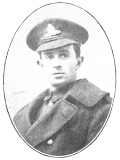
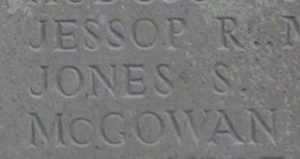
Humphrey Taylor Lewis, Sergeant, 18540, Royal Garrison Artillery. Humphrey was born at Corris in 1875, the son of Richard and Elizabeth Lewis. He had served during the Boer War of 1899-1902 with the 2nd Company, Southern Division, Royal Garrison Artillery, and was in India prior to the outbreak of the Great War. Humphrey was posted to France with the 1st Siege Battery, Royal Garrison Artillery on 17 September 1914. He would have served during the retreat from Mons to the Marne, and in the subsequent Battle of the Aisne, before moving to the Ypres Salient with the BEF. At some time after he was posted to the 1st Division Ammunition Column, and probably saw further action with the 1st Division at the Battle of Neuve-Chapelle and the Battle of Loos in 1915. Humphrey was then posted to the 172nd Siege Battery, Royal Garrison Artillery, which had moved to France on 12 September 1916. He was wounded at the Third Battle of Ypres, suffering gunshot wounds to his back and right thigh. Humphrey was evacuated to the 3rd Canadian Casualty Clearing Station at Remy Sidings, where he died of his wounds on 15 September 1917, aged 44. He is buried in Lijssenthoek Military Cemetery, Belgium.

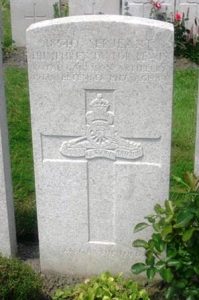
William John Lewis, Private, 291018, Royal Welsh Fusiliers. William was the son of John and Mary Lewis, of Corris. He worked as a Farm Labourer prior to enlisting at Dolgellau into the 7th Battalion, Royal Welsh Fusiliers on 15 March 1915. He was posted to Bedford with the 2/7th Battalion, Royal Welsh Fusiliers for training, before embarking for Egypt on 17 July 1916, joining the 1/7th Battalion, Royal Welsh Fusiliers, which was attached to 158 Brigade, 53rd (Welsh) Division. The Division had been evacuated from Gallipoli in December 1915, moving to Egypt to join the EEF, and helped guard the Suez Canal before taking part in operations to drive the Turks out of the Sinai. The EEF then turned its attention onto driving the Turks out of Palestine, and on 26 March 1917 launched its first offensive against the coastal city of Gaza, which guarded the road to Jerusalem. Initial gains during the day were lost when the assaulting divisions lost touch with each other and communication broke down when a thick fog cloaked the battlefield, and the battle was lost. A second attempt to force Gaza was launched on 17 April, which also failed, and the EEF suffered a change in leadership, with Sir Edmund Allenby assuming command, before being re-organised, and a third offensive was launched against a wider front from Beersheba to Gaza on 31 October 1917. This time the Turkish defences were breached, and the road to Jerusalem now lay open and the EEF began to advance north. On 6 November 1917, 158 Brigade launched an attack on the Khuweilfeh Heights. William was killed during the assault that day. The 39-year-old is buried in Beersheba War Cemetery, Israel.
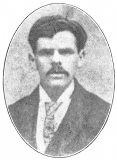
John Pattison, Private, 1025, Royal Welsh Fusiliers. John was the son of Richard and Catherine Jane Pattison, of 2, Greenfield Terrace, Corris. He worked as a Postman prior to the war. John enlisted at Machynlleth into the 7th Battalion, Royal Welsh Fusiliers. The battalion was a Territorial unit, which mobilised for war at Newtown in August 1914, as part of North Wales Brigade, Welsh Division and moved to Conway until the end of the month, before moving to Northampton. In December the Division moved to Cambridge and then in May 1915 to Bedford, where the Division was numbered and the formation became 158 Brigade, 53rd (Welsh) Division. On 19 July 1915 the entire Division sailed from Devonport for Imbros and on 9 August 1915 landed at Suvla Bay. The infantry moved off the beaches into the bush, but due to a lack of maps and no knowledge of the terrain, many of the units became disorientated, and the situation became chaotic. John was wounded soon after the landings, and died of wounds at the 35th Field Ambulance on 10 August 1915. The 24-year-old is buried in Hill 10 Cemetery, Gallipoli.
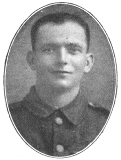
Hugh Pugh, Private, 49296, Royal Welsh Fusiliers. Hugh was the son of Henry Jones Pugh and Winnie Anne Pugh, of Victoria Buildings, Corris. He worked as a Warehouseman in Liverpool prior to the war. Hugh enlisted at Liverpool into the Royal Welsh Fusiliers at the end of 1916, and after completing his training was posted to the 1st Battalion, Royal Welsh Fusiliers. The battalion had been on the Western Front since October 1914, attached to 22 Brigade, 7th Division, and had taken part in most of the major battles over the coming years. During March 1917 the Division followed up the German Retreat to the Hindenburg Line, and took part in Flanking Operations Round Bullecourt, before taking part in the Battle of Bullecourt alongside the Australian Corps. Later in the year the Division moved to Ypres, and fought at the Battle of the Polygon Wood. The Division saw further fighting at Ypres, but had taken so many casualties that it was relieved and moved to Italy in November to support the Italian army. Hugh died in Italy on 17 January 1918, aged 32. He is buried in Staglieno Cemetery, Genoa.
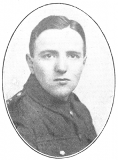
Henry Rees, Private, 15515, Royal Welsh Fusiliers. Henry was the son of John and Jane Rees, of 4 Ratgoed Cottage, Aberllefenni, Corris. He worked as a labourer prior to the war. Henry enlisted at Machynlleth into the 14th Battalion, Royal Welsh Fusiliers soon after the outbreak of war. The battalion was raised at Llandudno by the Welsh National Executive Committee, joining 128 Brigade, 43rd (Welsh) Division and trained in North Wales before moving to Winchester in the summer of 1915, where the formation became renumbered 113 Brigade, 38th (Welsh) Division. The Division moved to France on 2 December 1915 and moved to the Nursery Sector near Fleurbaix for trench initiation alongside the Guards Division. The Division then held a sector of the line near Cuinchy before marching south to the Somme sector in June 1916 to take part in the assault on Mametz Wood. The first attack on the wood was launched on a two-battalion front on 7 July, but failed, and the Divisional Commander, Sir Ivor Philipps, was replaced before the Division attacked again on a two Brigade front on 10 July 1916. After two days of ferocious hand-to-hand fighting, the wood was cleared up to its northern edge, before the battered Division was relieved. It then took over a section of the front at Hébuterne before moving to the Ypres Salient, and taking over the Canal Bank sector at Boesinghe. The infantry battalions of the Division then began carrying out the normal pattern of rotation in the trenches, four days in the front, four in support and four in reserve, whilst also working on trench improvement, digging new trenches, and also carrying out regular patrols and trench raids. On 30 October the 14th RWF relieved the 13th RWF in the front line on the Canal Bank to begin a routine spell in the trenches. On the following day, 31 October 1916, Henry was with a working party in the trench, constructing new dugouts, when a German artillery shell crashed into the party, killing him and one other man. Henry was 32-years-old when he was killed that day and is buried in Essex Farm Cemetery, Belgium.
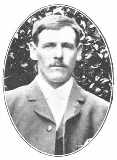
Ebenezer Roberts, Private, 3058, Welsh Guards. Ebenezer was the son of David and Catherine Roberts, of 31, Pensarn, Aberllefenni. He worked as a farm labourer prior to the war. Ebenezer enlisted into the Welsh Guards and was posted to France in 1916, joining the 1st Battalion, Welsh Guards, which was attached to the 3rd Guards Brigade, Guards Division. In July 1916 the Division moved to the Somme, where they fought at the Battle of Flers-Courcelette, and then at the Battle of Morval, capturing Lesboeufs Village. The Division remained here for the winter, and in March 1917 took part in the advance caused by the German Retreat to the Hindenburg Line. Later that year the Division moved north to Ypres, taking part in the opening offensive of the Third Battle of Ypres, at the Battle of the Pilckem Ridge. The Guards saw further action at Ypres before being moved south and took part in the Battle of Cambrai, seeing heavy fighting during the German counter-attack. The Guards remained in the area over the final winter of the war, and were stationed near Gouzeaucourt when the German Spring Offensive hit the area on 21 March 1918. The Welsh Guards were put on standby at Mercatel, on 1/2 hours’ notice to leave, before taking up positions behind Boyelles at Boisleux-St. Marc, and over the coming days suffered sporadic spells of shell-fire. Fortunately, the main attack was taking place along the front to the south, so the Welsh Guards escaped the massive casualties that other units had suffered throughout this time. The Guards Division then moved to the Douchy Les-Ayette sector, and spent most of May there before moving out of the line to Barly in June, then during July moved back into the line at Boyelles. To the south, a combined British, Australian and Canadian offensive at Villers-Bretonneux on 8 August 1918 broke German spirit, and on 21 August a massive offensive was launched by the Allies along the Western Front. The 1st Welsh Guards were ordered into the fight on 23 August, and moved into its assembly area that afternoon. As part of the forthcoming attack by the Guards Division, the Welsh Guards were given the objective of the ridge at St. Leger. The attack was a success, and the Guardsmen dug in and consolidated their gains during the evening of the 24th. On the following day the Welsh Guards continued their advance, but upon reaching the railway embankment found the wire to be uncut, so further attacks were called off. Ebenezer had been wounded during the fighting for St. Leger, and died of his wounds on 26 August 1918, aged 21. He is buried in St. Hilaire Cemetery Extension, Frevent, France.
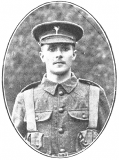
Iorwerth Edgar Roberts, Lance Corporal, 31298, Royal Welsh Fusiliers. Iorwerth was born at Corris in 1887, the son of Hugh Stephen and Elizabeth Roberts. His parents later resided at Arwelfa, 3, Brynmair Terrace, Tywyn. Iorwerth was an assistant master, at Corris Council School and then at Manod Council School, Ffestiniog prior to the war. He enlisted at Blaenau Ffestiniog into the 13th Battalion, Royal Welsh Fusiliers on 4 June 1915. The battalion was raised at Rhyl, joining 128 Brigade, 43rd (Welsh) Division and trained in North Wales before moving to Winchester in the summer of 1915, where the formation became renumbered 113 Brigade, 38th (Welsh) Division. The Division moved to France on 2 December 1915 and moved to the Nursery Sector near Fleurbaix for trench initiation alongside the Guards Division. The Division then held a sector of the line near Cuinchy before marching south to the Somme sector in June 1916 to take part in the assault on Mametz Wood. The first attack on the wood was launched on a two-battalion front on 7 July, but failed, and the Divisional Commander, Sir Ivor Philipps, was replaced before the Division attacked again on a two Brigade front on 10 July 1916. Iorwerth was shot dead by a sniper on 10 July 1916 whilst attempting to help a wounded comrade. The 29-year-old is buried in Flatiron Copse Cemetery, Mametz, France.
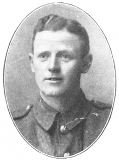
Richard Roberts, Private, 13478, Royal Welsh Fusiliers. Richard was the son of Richard and Mary Roberts, of Tal-y-Llyn. He lodged at Aberllefenni prior to the war, and worked as a Quarryman. Richard enlisted at Bridgend into the 8th Battalion, Royal Welsh Fusiliers soon after the outbreak of war. The battalion formed at Wrexham before moving to Salisbury Plain to join 40 Brigade, 13th (Western) Division. Towards the end of February, the entire Division concentrated at Blackdown in Hampshire. On 7 June 1915 orders were received to prepare to move to the Mediterranean and on 13 June 1915 the Division sailed for Alexandria. The Division then moved to Mudros before being landed at Cape Helles, Gallipoli from 6 July 1915, relieving the 29th Division. The Division then left and returned to Mudros at the end of the month, before being landed at Anzac Cove from 3 August 1915, to fight alongside the Anzacs in the forthcoming offensive. The 13th Division then took part in heavy fighting during the Battles of Sari Bair, Russell’s Top, and at Hill 60 over the coming days. Richard was wounded at Anzac, and was evacuated by Hospital Ship, but died of his wounds at sea on 21 August 1915. The body of the 34-year-old was brought ashore and he was buried in East Mudros Military Cemetery, Greece.
Thomas Oliver Thomas, Second Lieutenant, Royal Welsh Fusiliers. Thomas was born at Lampeter in 1893, the son of the Reverend David Pritchard Thomas and Sarah Jane Thomas (nee Jones). His father later became Vicar of St. David’s College, Lampeter, then by 1911 was Vicar of Corris. Thomas was educated at St. David’s College, Lampeter, before becoming a schoolmaster in London, and enlisted there at the outbreak of war into the Public Schools Battalion, Royal Fusiliers. Thomas was commissioned into the Royal Welsh Fusiliers in 1915, and was posted to France in December 1915 with the 17th Battalion, Royal Welsh Fusiliers, which was attached to 115 Brigade, 38th (Welsh) Division. The Division moved to the Fleurbaix sector, where it was initiated into trench warfare. During June 1916 the Division marched south to the Somme, and on 7 July 1916 attacked Mametz Wood. The initial attack failed, and it was three days later, on 10 July, that a fresh attack was mounted. Thomas was killed in action during the terrible fighting in the wood on 11 July 1916. He was 22 years old, and is commemorated on the Thiepval Memorial, France.
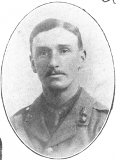
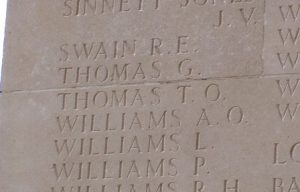
Arthur Ifor Meakin Williams, MiD, Captain, Royal Welsh Fusiliers. Arthur was the son of Sir Howell Jones Williams and Lady Muriel Annie Williams (nee Meakin), of Penrhyn, 263, Camden Road, London. He was educated at Highgate School, where he played for the Cricket XI. Arthur enlisted into the 15th Battalion, Royal Welsh Fusiliers in London soon after the outbreak of war, and was commissioned as Second Lieutenant into the battalion on 9 November 1914. The battalion had been raised in London, moving to Llandudno to join 128 Brigade, 43rd (Welsh) Division and trained in North Wales before moving to Winchester in the summer of 1915, where the formation became renumbered 113 Brigade, 38th (Welsh) Division. The Division moved to France on 2 December 1915 and moved to the Nursery Sector near Fleurbaix for trench initiation alongside the Guards Division. The Division then held a sector of the line near Cuinchy before marching south to the Somme sector in June 1916 to take part in the assault on Mametz Wood. The first attack on the wood was launched on a two-battalion front on 7 July, but failed, and the Divisional Commander, Sir Ivor Philipps, was replaced before the Division attacked again on a two Brigade front on 10 July 1916. After two days of ferocious hand-to-hand fighting, the wood was cleared up to its northern edge, before the battered Division was relieved. It then took over a section of the front at Hébuterne before moving to the Ypres Salient, and taking over the Canal Bank sector at Boesinghe. The infantry battalions of the Division then began carrying out the normal pattern of rotation in the trenches, four days in the front, four in support and four in reserve, whilst also working on trench improvement, digging new trenches, and also carrying out regular patrols and trench raids. On 31 July 1917 the Division launched its famous assault on the Pilckem Ridge, and captured all of its objectives, before taking part in the ensuing Battle of Langemarck. In September the Division was relieved and moved to the Erquinghem-sur-la-Lys sector, near Armentieres, where it spent the winter. On 27 February 1918 the 15th RWF was disbanded, and Arthur, along with around 250 other officers and men, transferred to the 13th RWF, in the same brigade. At the end of March 1918, the Division was transferred to the Somme, relieving the battered 2nd and 47th Divisions at Bouzincourt Ridge, north of Albert, and on 21 August 1918 launched an assault across the flooded Ancre Valley, as part of the great Allied offensive, before fighting its way across the old Somme battlefields towards the mighty Hindenburg Line. By 5 October the Division had reached Le Catelet, and began preparing for an assault on Mortho Wood. At 01.05 on 8 October the Division attacked Mortho Wood, supported by Tanks, and despite fierce resistance from the Germans, attained all of their objectives. Arthur was wounded during the fighting for the wood and died of his wounds on the following day, 9 October 1918, aged 22. He is buried in Five Points Cemetery, Lechelles, France. He was posthumously Mentioned in Despatches, the notice appearing in the London Gazette of 24 December 1918.
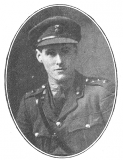
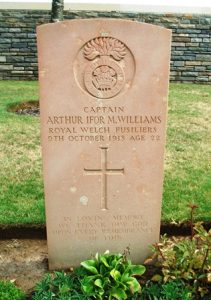
Robert John Williams, Private, 291579, Royal Welsh Fusiliers. Robert was the son of Evan Owen and Mary Ellen Williams, of Aberllefenni Farm, Aberllefenni. He worked as a Rockman prior to the war. Robert enlisted at Dolgellau into the 7th Battalion, Royal Welsh Fusiliers on 19 February 1916, and was posted to Park Hall, Oswestry for training. He was then posted to France, embarking at Southampton on 23 May 1917, and joined the 15th Battalion, Royal Welsh Fusiliers, which was attached to 113 Brigade, 38th (Welsh) Division, at Ypres on 17 June. The Division was preparing to launch its assault on the Pilckem Ridge, as part of the opening assault of the Third Battle of Ypres. The Division launched its assault at 03.50 on 31 July 1917, and after a day of brutal fighting had attained its objectives, capturing the position known as Iron Cross and reaching the Steenbeek. The 15th RWF, which had lost most of its officers, consolidated its positions on Iron Cross and held on over the following day, in heavy rain. The battered battalion moved to posts on the Steenbeek on 2 August and remained there until its relief on 5 August. Robert had been posted as missing, believed killed, at some time between the launching of the assault on 31 July and 4 August 1917. His death was finally recoded to have taken place on 4 August 1917. The 27-year-old has no known grave and is commemorated on the Ypres (Menin Gate) Memorial, Belgium.
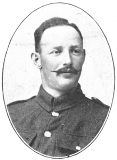
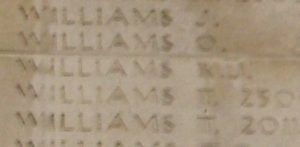
World War Two, 1939-1945
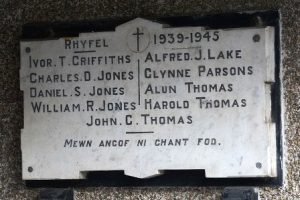
Ivor Thomas Griffiths, AM, Sick Berth Attendant, D/MX93880, Royal Navy. Ivor was born at Corris on 4 April 1922, the son of Thomas and Jane Griffiths. He married Glenys Cavell Pearce, of Cyffylliog, Flintshire, in 1941. Ivor enlisted into the Royal Navy, and trained as a Sick Berth Attendant, before being posted aboard the aircraft carrier HMS Illustrious. She began the war serving with the Mediterranean Fleet, in which her aircraft sank one Italian battleship and badly damaged two others during the Battle of Taranto in late 1940. Two months later, Illustrious was damaged by German dive bombers and was repaired in the USA. While returning to Britain she collided with HMS Formidable and was damaged, so underwent more repairs before being transferred to the Indian Ocean in early 1942 to support the invasion of Madagascar. She returned home in early 1943 and was refitted before being transferred to Force H for the Battle of Salerno in mid-1943 and then re-joined the Eastern Fleet in the Indian Ocean at the beginning of 1944. On 11 March 1944 one of her aircraft crashed on her deck whilst landing and began to burn. Ivor and an officer, Sub-Lieutenant McHardy, climbed onto the burning aircraft to attempt to rescue the pilot, but the aircraft then exploded, killing all three men. Ivor and McHardy were both posthumously awarded the Albert Medal for their gallantry. The 23-uear-old Ivor was buried at sea, so is commemorated on the Plymouth Naval Memorial, Devon.
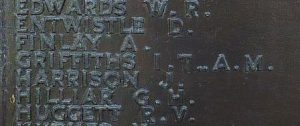
Charles David Jones, Marine, PLY/X106073, Royal Marines. Charles was born at Corris on 13 October 1924, the son of John Edward Jones and Ada Winifred Jones (nee Rigby). He worked as a Builder’s Labourer prior to the war. Charles enlisted into the Royal Marines and after passing his training was posted aboard the C-class cruiser HMS Carlisle. She was deployed to the Mediterranean Sea from the Far East in March 1941 and began convoy escort duties. She took part in the Battle of Cape Matapan, and also the Battles of Sirte. Carlisle was damaged by German aircraft during the Battle of Crete on 22 May 1941, when her Commanding Officer was killed. After being repaired she continued to work on convoy escort duties between Alexandria and Malta. In July 1943, she escorted the support force for the Allied invasion of Sicily. On 9 October 1943, Carlisle was attacked by German Ju 87 dive bombers, and was badly damaged, suffering 24 men killed during the attack. Charles was among those killed in the bombing that day. The 18-year-old has no known grave and is commemorated on the Plymouth Naval Memorial, Devon.
Daniel Smith Jones, Private, 14411822, Queen’s Own Royal West Kent Regiment. Daniel was the son of John Jones and Louisa Jane Jones (nee Smith), of Corris. He enlisted into the army and was posted to the 4th Battalion, Queen’s Own Royal West Kent Regiment. The Battalion was a Territorial Army unit, which was attached to the 132nd Infantry Brigade, 44th (Home Counties) Division. The Division was sent to France in April 1940 to join the BEF, but a month later was evacuated from Dunkirk. The Division then spent two years on home defence before being deployed to North Africa. The Division was disbanded in 1943, and the 4th Queen’s Own was transferred to the 161st Indian Infantry Brigade in Burma. Daniel died in Burma on 21 March 1944, aged 19. He was originally buried in Akyab War Cemetery, but on 20 May 1952 the graves within the cemetery were exhumed, and were re-buried in Taukkyan War Cemetery, Myanmar.
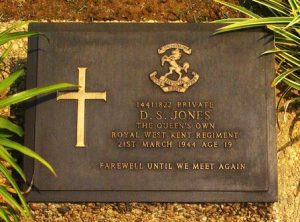
William Richard Jones, Gunner, 4201851, Royal Artillery. William was the son of Maldwyn Jones and Elizabeth Ann Jones (nee Edwards), of Aberllefenni. He enlisted into the Royal Artillery and was posted to 55 (The West Somerset Yeomanry) Field Regiment, Royal Artillery. The regiment spent much of the war on home service whilst preparing for the Normandy invasion. William died whilst on active service near Grantham, Lincolnshire on 25 April 1944, less than three months prior to D-Day. His remains were brought home for burial in Tal-y-Llyn Cemetery, near Corris.
Alfred John Lake, Captain, 64115, Royal Fusiliers (City of London Regiment). Alfred was born on 1 February 1891, the son of Alfred John and Annie Lake, of Cheltenham. He worked for the Great Western Railway as a railway clerk prior to the war, and had held positions in Paddington, London before coming to Wales, where he worked at Aberkenfig. On 16 December 1918, a month after the Armistice, he married Sarah Rees, of Aberllefenni, at Canning Town, London, and the couple came to live in her native Corris. Alfred was probably a Great War veteran, and he continued to serve in the Territorial Army, with the Honourable Artillery Company, between the wars. He was given an emergency commission into the Royal Fusiliers on 2 December 1939, and appointed Quartermaster. Alfred died at home in Corris on 9 September 1944, aged 53. He is buried in Tal-y-Llyn Cemetery, near Corris.
Glynne Parsons, Lieutenant, 268138, South Wales Borderers. Glynne was born on 3 April 1922, the son of John Rowlands Parsons and Annie Myfanwy Parsons (nee Humphreys), of Corris. He was educated at Chatham House School and at Guy’s Hospital College, where he studied law from 1940 until 1941. Glynne then enlisted into the army, before gaining a commission into the 1st Battalion, South Wales Borderers on 20 March 1943. He was then attached to the 2/5th Battalion, Leicestershire Regiment. The battalion had served with the BEF in 1940, but Glynne joined it just before it left England for North Africa in 1943. The battalion took part Battle of Kasserine Pass, and after a three month spell out of the line, took part in the Allied invasion of Italy. The battalion helped breach the Volturno Line in October before taking part in the battles around the Winter Line. Glynne was killed in Italy on 9 December 1943, aged 21. He is buried in Minturno War Cemetery, Italy.
Alun Thomas, Private, 4201544, Welch Regiment. Alun was born on 13 December 1915, the son of Mr. and Mrs. William Thomas, of Corris. He enlisted into the army, and was posted to Sheringham, Norfolk, where he married Joan Elizabeth Knowles in 1943. Soon after his marriage, Alun was posted out to Palestine to join the 1st Battalion, Welch Regiment, which was refitting prior to taking part in Operation Husky, the invasion of Sicily. The 1st Welch landed on Sicily on 9 July 1943, and carried out beach duties. The battalion then crossed the Messina Straits in Landing Craft to take part in the invasion of mainland Italy, landing on 3 September 1943, and again carried out beach duties before being rushed back to Egypt to quell a revolt by Greek troops stationed in Alexandria. In May 1944 the 1st Welch was sent back to Italy, to fight as infantry again, to take part in the attack on the Gothic Line. On 6 September the 1st Welch supported an attack by the 7th Armoured Brigade on Croce, and after six days of intense fighting, helped capture the village. Alun was killed during the fighting for Croce, on 11 September 1944, aged 28. He is buried in Coriano Ridge War Cemetery, Italy.
George Harold Thomas, Private, 4193981, Welch Regiment. George was the son of George and Dorothy Jane Thomas, of Brynteirion, Corris. He enlisted into the army and was posted to the 11th Battalion, Welch Regiment, which was a holding battalion, used for the holding of trained troops prior to being posted to front line battalions. George died on active service in the Swansea area on 14 April 1940, aged 20. He was buried in Holy Trinity, Corris on 28 May 1940, some six weeks after his death.
John Corriswyn Thomas, Private, 7390350, Royal Army Medical Corps. John was the son of Robert Owen and Mary Jane Thomas, of Dafarn Newydd, Upper Corris. He enlisted into the Royal Army Medical Corps, and was posted to North Africa. John appears to have been killed when a German aircraft attacked a convoy of motor vehicles on 29 May 1942. The convoy included a number of motor ambulances of the Royal Army Medical Corps, which had the Red Cross prominently painted on them. John was 26 years old when he died in the Libyan desert, and is buried in Knightsbridge War Cemetery, Acroma, Libya.